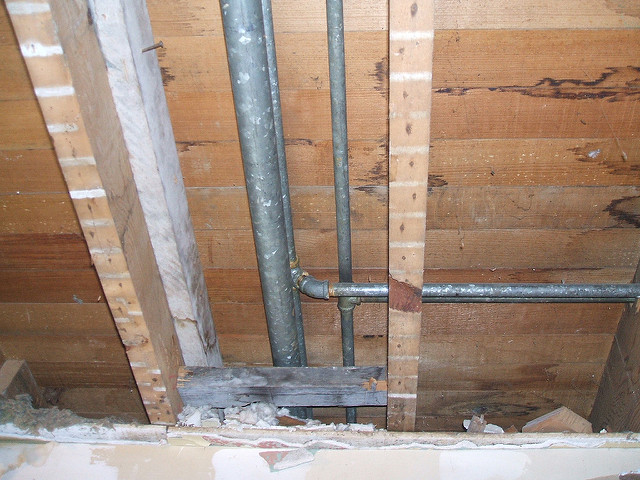6 Ways to Locate Concealed Water Leakages in Your House
6 Ways to Locate Concealed Water Leakages in Your House
Blog Article
The article author is making several good annotation relating to Top leak detection hacks overall in this great article on the next paragraphs.

Early detection of leaking water lines can reduce a potential calamity. Apart from conserving you money, it will certainly reduce the aggravation and also frustration. The minute you find a leakage, calling your plumber for repair work is the best service. However, some tiny water leaks may not be visible. If you can not discover it with your naked eyes, below are some hacks that assist.
1. Analyze the Water Meter
Examining it is a surefire way that aids you uncover leakages. If it moves, that shows a fast-moving leak. This indicates you may have a slow leakage that could even be underground.
2. Examine Water Consumption
If you find abrupt modifications, in spite of your usage being the very same, it implies that you have leakages in your plumbing system. An abrupt spike in your expense indicates a fast-moving leak.
A consistent rise every month, also with the exact same habits, reveals you have a sluggish leakage that's also slowly intensifying. Call a plumber to thoroughly check your property, specifically if you feel a cozy area on your floor with piping beneath.
3. Do a Food Coloring Test
30% comes from bathrooms when it comes to water intake. Test to see if they are running correctly. Decrease flecks of food shade in the storage tank and wait 10 minutes. There's a leakage between the storage tank and bowl if the shade in some way infiltrates your dish during that time without flushing.
4. Asses Outside Lines
Don't neglect to check your outdoor water lines too. Test faucets by connecting a yard hose pipe. Needs to water seep out of the link, you have a loosened rubber gasket. Change this as well as make certain all links are tight. If you've got a lawn sprinkler, it will certainly aid get it properly analyzed as well as kept yearly. One small leak can waste tons of water and surge your water costs.
5. Analyze the circumstance as well as inspect
Homeowners must make it a behavior to inspect under the sink counters as well as even inside closets for any bad odor or mold growth. These 2 red flags indicate a leak so timely attention is called for. Doing routine inspections, also bi-annually, can conserve you from a significant issue.
If you understand your home is already old, keep a watchful eye on your heaters, hose pipes, pipes etc. Check for discolorations and compromising as a lot of pipelines as well as appliances have a life span. They will also normally wear away as a result of deterioration. Don't wait for it to rise if you presume leaking water lines in your plumbing system. Call a professional plumber as soon as possible so you do not end up with a terrible mess in your home.
Early discovery of leaking water lines can reduce a potential calamity. Some tiny water leakages may not be noticeable. Checking it is a proven way that helps you find leaks. One little leak can lose loads of water and also surge your water costs.
If you think dripping water lines in your plumbing system, do not wait for it to rise.
How to Know If Your Home Has a Hidden Leak
Water Meter Reveals Inexplicable Water Usage
If you’d like to test whether or not there’s a leak somewhere in your home, you can do this using your water meter. Here is how to conduct the test:
Don’t use any water in your home for at least 30 minutes; this also means not turning on faucets or water-using appliances.
Go outside, and check your water meter for activity.
If your water meter shows that there was activity, even though no one was using any water, this proves that there is a leak in your home.Visible Mold or Mildew Growth
Leaks behind walls create moist, dark environments that allow mold and mildew to grow and thrive. Eventually, you might see mold growth forming on the wall closest to a hidden leak.
If mold is growing in an area that receives a high amount of moisture, such as a bathroom, it may simply be an indication that better ventilation is needed. However, if you see mold growth on a wall or the ceiling in an area where you would not expect, you probably have a hidden leak.
Musty, Mildew Odor
Sometimes you might not be able to see the mold or mildew that is growing as a result of a leak. However, the smell can give the problem away just as easily. If you catch a whiff of something musty, there’s a good chance that old water is collecting somewhere in your home that you can’t see.
Stained/Warped Walls, Ceilings, or Floors
When your home soaks up water, a variety of red flags can become visible, including ceiling stains, bubbling drywall, warped walls, and sagging floors. While these issues can be caused by excess humidity, they can also be signs that a pipe or plumbing connection has started leaking behind your walls.
Inexplicably High Water Bill
After a while, you get a general sense for what your water bill should be. If you own a pool or sprinkler system, your bill will tend to be higher during summer. However, if you receive a water bill that seems especially high, and you can’t figure out what caused it, then you may have a hidden leak somewhere that’s increasing your bill.
https://www.plumbingjoint.com/blog/2019/july/how-to-know-if-your-home-has-a-hidden-leak/

I stumbled upon that piece on Detecting hidden plumbing leaks while surfing the search engines. If you please take the time to distribute this blog posting if you liked it. Many thanks for your time invested reading it.
Report this page